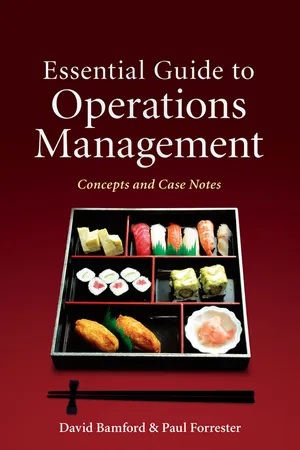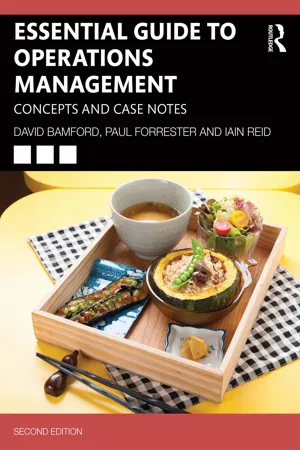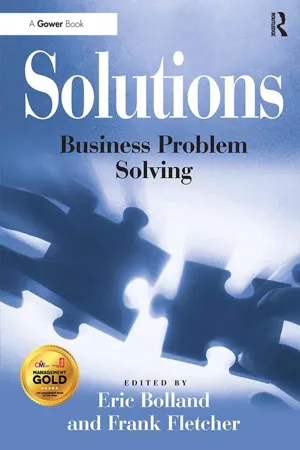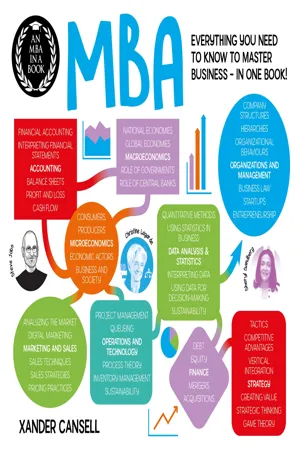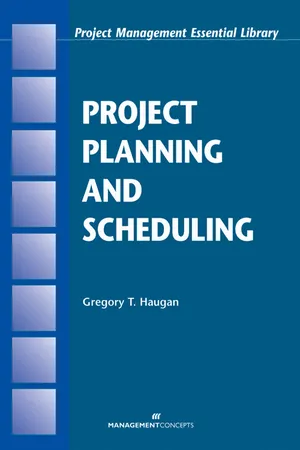Business
Operational Management
Operational management involves overseeing and controlling the day-to-day activities within an organization to ensure efficient production and delivery of goods and services. It encompasses strategic planning, resource allocation, and process optimization to achieve the organization's objectives. Effective operational management is crucial for maintaining quality, reducing costs, and meeting customer demands.
Written by Perlego with AI-assistance
Related key terms
11 Key excerpts on "Operational Management"
- eBook - ePub
Essential Guide to Operations Management
Concepts and Case Notes
- David Bamford, Paul Forrester(Authors)
- 2010(Publication Date)
- Wiley(Publisher)
1 OPERATIONS MANAGEMENT IN CONTEXTIntroduction
The aim of any service, public sector or retail or industrial operation is to deliver goods and services of the quality, quantity, cost and availability that will satisfy the customers’ needs while at the same time making most effective use of resources. This can only be achieved by giving attention to the design of products, processes and work for employees, and through competent planning and control. This is what Operations Management is about. This book presents the fundamental principles of operations management in a novel and structured way that is appropriate to the needs of contemporary Operations Managers, and students in this field.Operations management covers decision making in the organization, from top level management issues such as developing an operations strategy congruent with the company’s business and marketing strategies, to the immediate control of operations. It is, therefore, more than Operational Management. Each chapter develops an understanding of the theory and practice of key operational concepts to enable delivery of the strategy.The book is structured in a unique manner, to better reflect the concerns of the contemporary Operations Manager in the twenty-first century. The book is based around the conceptual model of operations management.The model centres upon the idea that operations management comprises three essential components:- Design of operations processes, products and services, and the work of individuals;
- Planning and control of operations once designs are in place and operational; and
- Ensuring quality of products and services produced and delivered, and (wherever possible) improving on these.
However these cannot be addressed in isolation. The essential element in effective operations management is the integration - eBook - ePub
Essential Guide to Operations Management
Concepts and Case Notes
- David Bamford, Paul Forrester, Iain Reid(Authors)
- 2023(Publication Date)
- Routledge(Publisher)
7 . Planning and control comprise the organising and monitoring of operations systems, projects and programmes, together with the feedback of variances from the plan for process or programme adjustment where necessary. It includes:- Controlling enterprise resources: The resources of the organisation (its facilities, people and materials) need to be effectively managed in terms of operational schedules, workflow, management and throughput.
- Lean, agile, resilient operations: The operations need to be managed in such a way that waste (of time, resources, money, effort, etc.) is minimised. Lean operations have evolved in terms of theories and practice since the 1980s, so to be competitive, organisations must grasp these proven and evidence-based principles.
- Managing sustainable supply networks: Organisations need to manage their supply network activity actively, and managers need to understand the complex interrelationships among suppliers and producers, people and technology. The value and importance attached to sustainable supply (environmentally, socially, ethically, and cost-efficiency) encompass much of the operational ‘value add’, and the management of these assets can be critical.
Regarding quality management, the main themes for operations managers include not only quality control but also an emphasis on improvement. This is the reason why this book punctuates the chapters on design and planning/control from quality management chapters with the coverage of managing operations strategically (Chapter 8 ). Our argument here is that ‘improvement’ forms the core of any effective operations strategy, so the main strategy chapter should be placed here to integrate and link preceding principles from the improvement process covered later. The main principles of quality management, covered in Chapters 9 and 10 - eBook - ePub
The 30 Day MBA
Your Fast Track Guide to Business Success
- Colin Barrow(Author)
- 2023(Publication Date)
- Kogan Page(Publisher)
10Operations management
- Supply chain management
- Outsourcing
- Production methods
- Controlling operations
- Maintaining quality
- Information systems
MIT Sloane defines operations management as the subject that ‘deals with the design and management of products, processes, services and supply chains. It considers the acquisition, development, and utilization of resources that firms need to deliver the goods and services their clients want’. This, the school goes on to explain, ranges from strategic issues such as where plants are located down to tactical levels such as plant layout, production scheduling, inventory management, quality control and inspection, traffic and materials handling, and equipment maintenance policies.To stay ahead, companies need to generate innovation, organize production, collaborate with other companies and manage the performance of activities, processes, resources and control systems used to deliver goods and services. Operations management is the catch-all title used to hold all these disparate fields together. Often in business schools the subject is afforded a distinct syllabus of its own, as for example is the case at Cranfield School of Management, Warwick, and Bocconi, in Milan, Italy. At Cardiff Business School, Logistics and Operations Management are bundled together with a strong emphasis on ‘Lean Thinking’ and in Barcelona’s Esade Business School ‘Innovation’ is the partner subject.However the subject is taught, the foundations if not the content started out with the work of Frederick W Taylor. Usually referred to as the ‘father of scientific management’, he studied and measured the way people worked, searching out ways to improve productivity. His book, The Principles of Scientific Management - eBook - ePub
An Introduction to Operations Management
The Joy of Operations
- Ajay Das(Author)
- 2015(Publication Date)
- Routledge(Publisher)
- The number of CEOs with operations management backgrounds are increasing. Jobs in operations are available at all experience levels.
How Is It Done?
- To accomplish company goals, operations managers engage in a series of tasks, including forecasting, location planning, capacity planning, inventory management, supply chain management, quality management, and project management. An important part of the job is to understand and analyze work flows for product and process design and improvement.
-
The tasks of operations managers can be organized into a simple framework:
- Aligning: Ensuring that operations goals are in synch with and support larger business goals.
- Designing: Foundational tasks that build business operations, including forecasting, process/product design, capacity planning, and supply chain design.
- Managing: Managing the flow of activities in the day-to-day running of a business, including work process analysis and improvement, managing capacity, supply chain management, inventory management, and managing quality and projects.
Was It Done Right?
- Operations managers design and use high-level dashboards (margins, customer service, quality, and innovation) and lower-level, operational dashboards (inputs costs, supplier quality, inventory holdings, delivery lead times) of key system performance indicators (KPIs).
- Productivity is a common measure of the efficiency of operational processes. Productivity can be measured as single-factor and multi-factor productivity.
- eBook - ePub
Solutions
Business Problem Solving
- Frank Fletcher, Eric Bolland(Authors)
- 2016(Publication Date)
- Routledge(Publisher)
The vast majority of organizations in the US are classified as service organizations. Therefore, while operations may move physical goods, often these goods are a small part of the overall package. This applies to all sizes of organizations and at all stages of the product/service and firm life cycles. Planning and executing are critical to success. While it may be that management wants to control all aspects of the business, it is usually one or maybe a few critical operations that really matter. These primary processes need significant management attention for successful execution of the firm as a whole. These are the points that require performance measures and are leveraging points in the management information system used to manage operations. Operations management is at the core of business and suggestions for focused operations management are the main topics of this chapter.How does operations management fit into the business?
If marketing and sales are the external focus of a company, operations are where the internal emphasis lies. Astute managers know that no part of a company stands on its own. Effective integration of the many roles and responsibilities in a company is a key indicator of excellent management. There are many components of a company:• Finance (see Chapter sixteen ): which provides the capital resources needed for innovation and ongoing operations.• Human resources (see Chapter seventeen ): which provides qualified individuals with education and training to keep those individuals at appropriate levels of knowledge and skill.• Accounting (see Chapter fifteen ): which keeps track of activities and ensures enough cash is on hand to meet short, medium and long-term obligations.Operations is the area that ties other areas of the organization to the company’s objectives. Operations management is a balancing act involving a firm’s ability to meet market demand while staying within budget and managing costs. While most companies strive to develop adequate capacity to meet demand, firms with limited ability to meet market demand may enjoy greater profitability than those with excess capacity. Efficiency is rarely the correct objective of operations. Instead, effectiveness is a more appropriate measure of company profitability. Management of operations is often one of the most complex undertakings in a company, but this need not be so. Effective operations management recognizes and acts to take profitable advantage of system limitations.Isn’t operations management more of an issue for manufacturing than service organizations?
It has been said that there are only a very few means of creating wealth. Traditionally these have been through extraction (mining and logging), agriculture (fishing and farming) and manufacturing. Contemporary theorists recognize that creativity is a source of wealth creation (advertising and entertainment) as well. All other activities are simply transfers of wealth among the economic players. Depending on how the numbers are reported, manufacturing in the UK is roughly 8% of GDP. In the US, manufacturing now accounts for between 3% and 12% of all jobs, so most managers are not working in manufacturing settings. - eBook - ePub
- Susan Miller(Author)
- 2011(Publication Date)
- SAGE Publications Ltd(Publisher)
ensuring their efficient, safe (for those involved) and environmentally benign operation. When we run our event we have to plan and control its smooth operation, without delays, encompassing the supply of dinner courses and drinks, ensuring the safety of our guests, and disposing of rubbish appropriately. It is therefore fair to say that at different parts of our lives we become operations managers and thus responsible for reconciling resources with environmental needs. Operations management, and its principles, therefore, are, not limited to an organization’s function. Almost all functions will have to organize their processes and resources to meet some environmental or market requirements. A marketing department will have to develop and manage a process to collect and analyze customer data, which will subsequently help inform that organization’s marketing strategy. It is therefore important not to dismiss the management of operations as the responsibility of a function but to understand and implement its principles.What is operations management?
From the above introduction we may conclude that operations management may involve several overlapping notions such as process management, value, and a reconciliation of resources with market requirements. When a product is manufactured, or when a passenger goes through an airport, a process is followed. Put simply, this process is trying to add value by transforming an input into an output. So, in the case of a manufactured product, value is being added when the raw material is transformed into an end product, or in the case of the airport, value is being added when passengers’ states are ‘transformed’ as they move from the carpark to the departure gate.In any transformation process, there are usually two types of resources as shown in Figure 7.1 . The first is referred to as transformed and includes those resources that are being changed through the process. In manufacturing this would include raw materials whereas in services this would include customers and information. The second type of resources is referred to as the transforming - Pierre-Andre Julien(Author)
- 2018(Publication Date)
- Routledge(Publisher)
8Operations management“…to whom some could reproach that, since they do not see either end of the joining line between too much and too little, long and short, light and heavy, near and far, and since they recognize neither its end nor its beginning, they judge very uncertainly about the middle.” Michel de Montaigne, “Essai”.1. Introduction
1.1 Definition of operations management (OM)Noilet, Kelada and Diorio (1986) gave the following definition of operations management: “A set of planning, organization, command and control activities, to which are sometimes added assurance activities, applicable to production operations. The management activities are aimed at helping achieve the firm’s strategic goals or objectives, through optimal use of the tangible and intangible resources at its disposal. In doing so, the activity managers consider the various internal and external constraints to be respected” (our translation).These same authors, at the beginning of their book, state that they have used the terms “production”, “operations” and “production operations” synonymously. Rather than embarking on a discussion of the terminology, the author of this chapter has preferred to suggest that many of the activities and functions of a manufacturing production firm are closely linked, and that most cannot be isolated, in whole or in part, without some difficulty. In addition, to simplify the organization of this chapter on operations and production management- eBook - ePub
An MBA in a Book
Everything You Need to Know to Master Business - In One Book!
- Xander Cansell(Author)
- 2023(Publication Date)
- Arcturus(Publisher)
Operations is the work of efficiently managing the way in which a business creates goods or services. Often, it is the behind-the-scenes work of managing the ongoing systems and processes that facilitate the outputs of your business.Examples of this could be the documentation of specific work procedures, such as regular cleaning routines or the layout of a workspace to improve the speed of service. It can also refer to the small (or large) elements of work necessary to achieve a particular project.OPERATIONS MANAGEMENT
Operations management provides frameworks and tools to analyze, maintain and optimize key decisions around operational processes. It looks at the planning, optimization of resources and inputs, and the organization and supervision of how products and services are designed and delivered.The process flow diagram
The process flow diagram is a type of flowchart that shows the relationships between the main components at an industrial plant or factory. It is commonly used in chemical engineering and process engineering and is also sometimes called a schematic flow diagram or system flow diagram . It can help document, model or improve a process.It uses symbols and notes to show how a process works and what is happening at each stage and usually consists of:• Flow units: Inputs being transformed into outputs (such as raw materials).• Buffers: Holding areas for flow units in between activities.• Activities: Steps for transforming flow units into outputs.Once you have a process model, the key terms and concepts involved in the analysis are:• Inventory (sometimes called work-in-progress ): The total number of flow units in a system. It doesn’t include any inputs yet to be processed or outputs that have finished the process. In certain circumstances, customers can be referred to as inventory units.• Flow time: - Jeff Slawsky, Samee Zafar(Authors)
- 2017(Publication Date)
- Routledge(Publisher)
CHAPTER 7Operations ManagementBusiness strategy means having a declared purpose and a plan to realize that purpose. It requires envisioning tomorrow’s marketplace and the desired competitive positioning of the business within that marketplace. Card managers must ask the questions – what will the market for card issuing and consumer lending look like three years from now and what role do we want to play in that market? Do we want to be price leaders? What unique competitive advantage should we be striving to develop that will lead us there? The answers to these questions indicate the strategic choices that a business must make in order to compete.At a basic level, the strategic plan must answer four key questions: • What is the product or service on offer? • Who will buy it? • Why will they buy it? • What is the optimum price?But business strategy, no matter how ingeniously envisioned and how rigorously articulated, can only achieve its ends if the company has the know-how and practical means of implementing it. Business strategy may be clever thinking but it has no significance unless the company has charted for itself a clear and viable operational strategy to put it into effect.In the minds of managers, operational strategy quite often plays second fiddle to business strategy – its sexier sister. But the truth is that the two are inseparable. Operational strategy provides the necessary answers to the equally important and fundamental questions about business viability that most strategy consultants overlook:- eBook - ePub
- Peter Jones(Author)
- 2008(Publication Date)
- Routledge(Publisher)
1 • • • • Operations management: theoretical underpinnings Peter JonesAssociate Dean (International) andITCA Chair of Production andOperations ManagementFaculty of Management & Law,University of SurreyGuildford, Surrey, UKIntroductionOperations Management (OM) is the study of how goods get manufactured and service gets delivered. Originally, it was founded on studies of how best to organize factories manufacturing automobiles and other consumer goods. But from the 1970s onwards, a greater emphasis was placed on understanding service operations. A seminal contribution to this was the publication of The Management of Service Operations (Sasser et al. 1978) by three distinguished Harvard professors. This book recognized that service firms were playing a greater and greater role in a nation’s economic activity and suggested that managing such firms and their operations may be different to practice in manufacturing – an issue we explore later in this chapter.Johnston (1994) defines OM and its scope and role within an organization. He states: ‘operations management … is a body of knowledge, experience and techniques covering such topics as process design, layout, production planning, inventory control, quality management and control, capacity planning and workforce management’ (Johnston 1994: 21).As an academic discipline, OM is highly applied, to the extent that some have argued that it is almost atheoretical (Schmenner and Swink 1998). The applied nature of OM is further illustrated when it is applied to the hospitality industry. Very rarely are managers assigned job titles as ‘Operations Managers’. Rather than this generic title, managers with operations responsibility are given specific roles such as Rooms Division Manager, Food and Beverage Manager, Restaurant Manager and so on.In this introductory chapter, we first consider the general OM theory and identify how this has been applied in the hospitality industry. Key operational trends in the industry are identified, along with the operational strategies firms have adopted. The chapter goes on to discuss the extent to which hospitality is different to other industries, as well as the extent to which it is homogenous or made up of sectors that have features distinctive to each other. Finally, an overview of the OM literature in hospitality is provided in order to identify the scale and scope of research in this field. - eBook - ePub
- Gregory T. Haugan PhD, PMP(Authors)
- 2001(Publication Date)
- Berrett-Koehler Publishers(Publisher)
Management control systems are constructed around a financial core in the operation of a business, as dollars are the common denominator for the heterogeneous elements of inputs and outputs. Projects fall within Anthony’s definition of management control systems but also are subject to the triple constraint of resources, time, and performance.The third type of planning is called operational control , again as a contraction of the term “operational planning and control.” Operational control is the process of ensuring that specific activities are carried out effectively and efficiently.4 It includes such activities as controlling hiring, implementing policies, controlling placement of advertising, controlling inventory, and developing production schedules. It assumes that exact data will be available and is deterministic as compared to management control, which uses approximations.Operational control system data often consist of non-monetary metrics such as number of items or hours, pounds of waste, machine-minutes, and person-minutes. There are elements of operational control in many project activities, especially in non-labor categories. Schedule control has many aspects of operational control, especially as practiced in some organizations after the schedule is “baselined.”In our context, project and program planning fits under management control, but with some overlap, as shown in the Venn diagram in Figure 2-1 .Project planning and scheduling is not an exact process, like a production facility turning out thousands of identical products each day, although certain activities can be planned and managed operationally. For the most part, our metrics are not precise, all projects are unique, and management judgment is required for planning and control.Projects must relate to the overall strategy of the organization, and the project can affect the strategy and in turn be affected by changes in strategies. Our goal is to complete the project successfully and deliver the product, service, or result to our customers for their use and benefit.
Index pages curate the most relevant extracts from our library of academic textbooks. They’ve been created using an in-house natural language model (NLM), each adding context and meaning to key research topics.
